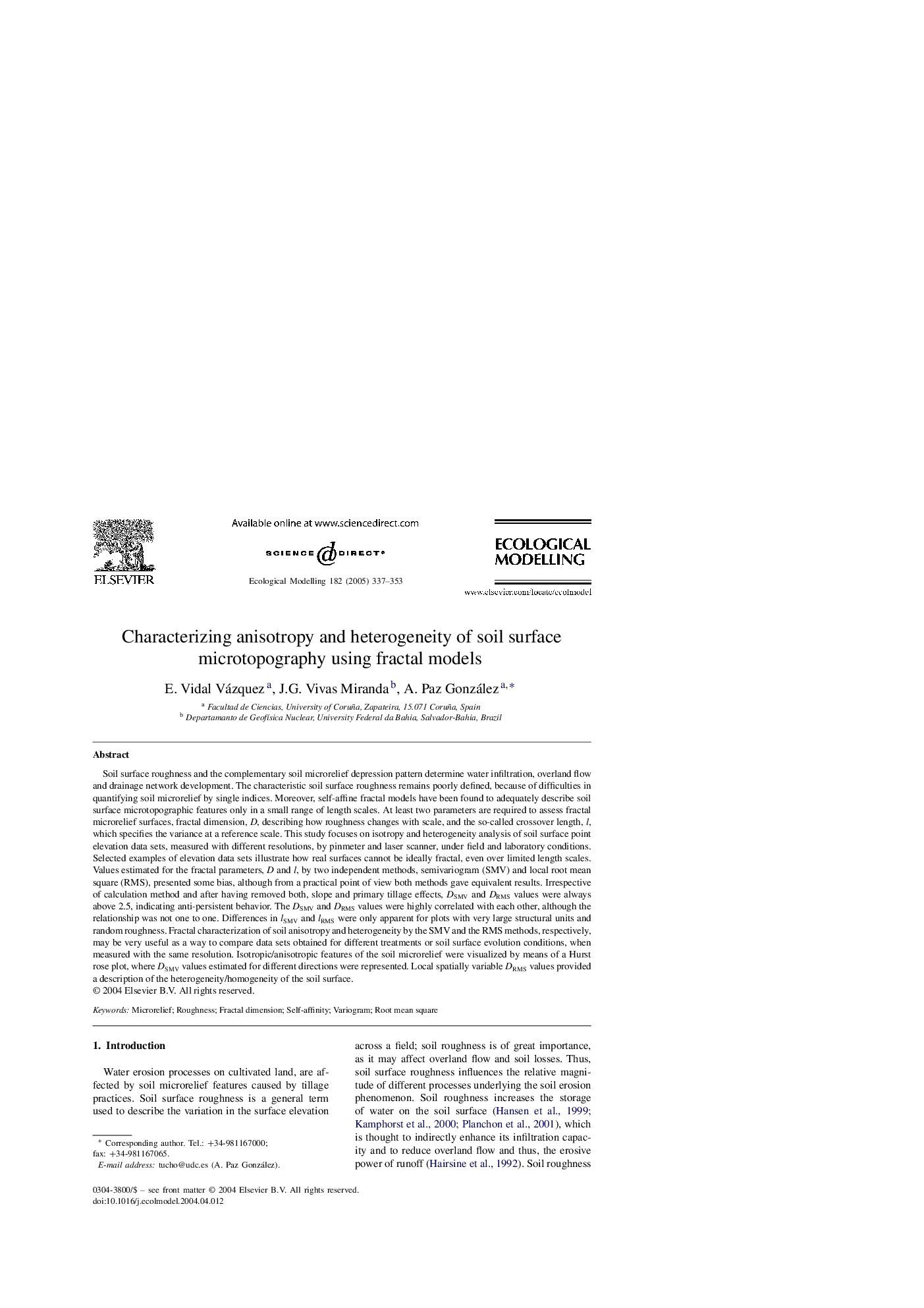| کد مقاله | کد نشریه | سال انتشار | مقاله انگلیسی | نسخه تمام متن |
|---|---|---|---|---|
| 9443623 | 1617580 | 2005 | 17 صفحه PDF | دانلود رایگان |
عنوان انگلیسی مقاله ISI
Characterizing anisotropy and heterogeneity of soil surface microtopography using fractal models
دانلود مقاله + سفارش ترجمه
دانلود مقاله ISI انگلیسی
رایگان برای ایرانیان
کلمات کلیدی
موضوعات مرتبط
علوم زیستی و بیوفناوری
علوم کشاورزی و بیولوژیک
بوم شناسی، تکامل، رفتار و سامانه شناسی
پیش نمایش صفحه اول مقاله

چکیده انگلیسی
Soil surface roughness and the complementary soil microrelief depression pattern determine water infiltration, overland flow and drainage network development. The characteristic soil surface roughness remains poorly defined, because of difficulties in quantifying soil microrelief by single indices. Moreover, self-affine fractal models have been found to adequately describe soil surface microtopographic features only in a small range of length scales. At least two parameters are required to assess fractal microrelief surfaces, fractal dimension, D, describing how roughness changes with scale, and the so-called crossover length, l, which specifies the variance at a reference scale. This study focuses on isotropy and heterogeneity analysis of soil surface point elevation data sets, measured with different resolutions, by pinmeter and laser scanner, under field and laboratory conditions. Selected examples of elevation data sets illustrate how real surfaces cannot be ideally fractal, even over limited length scales. Values estimated for the fractal parameters, D and l, by two independent methods, semivariogram (SMV) and local root mean square (RMS), presented some bias, although from a practical point of view both methods gave equivalent results. Irrespective of calculation method and after having removed both, slope and primary tillage effects, DSMV and DRMS values were always above 2.5, indicating anti-persistent behavior. The DSMV and DRMS values were highly correlated with each other, although the relationship was not one to one. Differences in lSMV and lRMS were only apparent for plots with very large structural units and random roughness. Fractal characterization of soil anisotropy and heterogeneity by the SMV and the RMS methods, respectively, may be very useful as a way to compare data sets obtained for different treatments or soil surface evolution conditions, when measured with the same resolution. Isotropic/anisotropic features of the soil microrelief were visualized by means of a Hurst rose plot, where DSMV values estimated for different directions were represented. Local spatially variable DRMS values provided a description of the heterogeneity/homogeneity of the soil surface.
ناشر
Database: Elsevier - ScienceDirect (ساینس دایرکت)
Journal: Ecological Modelling - Volume 182, Issues 3â4, 25 March 2005, Pages 337-353
Journal: Ecological Modelling - Volume 182, Issues 3â4, 25 March 2005, Pages 337-353
نویسندگان
E. Vidal Vázquez, J.G. Vivas Miranda, A. Paz González,